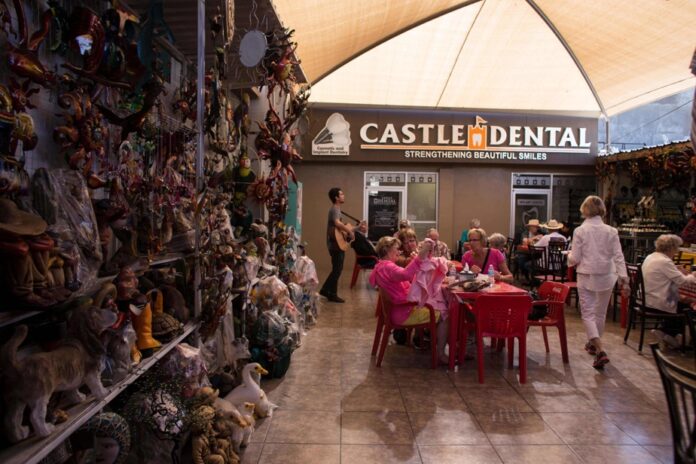(Los Algodones) Hundreds of thousands of tourists flock there each year, but not for the sun or the fine sand: in Los Algodones, a small town on the Mexican border with the United States, the major attraction for Americans, this are the dentists and their attractive rates.
The phenomenon is such that the place is nicknamed “Molar City”, the “city of the molar”. For more than 30 years, Los Algodones has served as an escape from the haphazard or overpriced coverage of the American healthcare system. A reputation built on word of mouth.
Around 300 dental offices and 600 practitioners crowd the four main streets.
“We have the highest concentration of dentists per square kilometer in the world,” jokes one of the many touts stationed at the border to bait the barge.
Bleachings, extractions, implants: promotions for various operations are displayed on almost every balcony or wall in this city of 7000 inhabitants.
The small town even runs a website, molarcity.org, to help patients organize their stay. Because despite fierce competition, demand remains inexhaustible.
During the high season, from November to March, Los Algodones welcomes around 6,000 tourists every day, according to local authorities. The rest of the year, some 2,000 Americans from neighboring California, Arizona or New Mexico parade daily.
All are attracted by the enormous “economic difference”, explains to AFP, doctor Carlos Rubio, one of the pioneers of this mecca of dental care, who opened his practice in 1985.
For the average American, the prices are unbeatable. The differential even makes it possible to cover travel costs in the event of procedures requiring several appointments, according to this 63-year-old practitioner, a graduate on both sides of the border.
“In California, my dentist wanted to put the equivalent of a Tesla in my mouth,” says René, a 60-something who came to have four implants.
If he hadn’t crossed the border, the procedure would have cost “57,000 dollars (US)” exclaims this Salvadoran VTC driver, who lives in the United States.
About a quarter of Americans don’t have dental coverage, according to the University of Illinois at Chicago.
Public programs such as Medicaid do not systematically cover all forms of dental care and these generally depend on private insurance policies, linked to the goodwill of employers.
For many, insurance often doesn’t cover “very much, just $1,000 a year,” says David Barry, a retiree who drove three hours from Arizona. What to finance “a crown or something like that, but for something major, it’s not ideal”.
Aged 64, this American has been receiving treatment in Los Algodones for more than ten years. The first time he needed implants and landed there on the advice of a friend.
“At the time, my dentist asked me about $35,000,” he recalls. “Here I had to pay between six and eight thousand. »
But the tariff gap between the two countries is not the only reason that pushes him to return.
“In the United States, we think the quality is not the same here, but it’s not,” he insists. “I even feel like the equipment and the lab are more advanced than my local dentist. »
In the nearby town of Andrade, California, the parking lot near the border crossing fills up early in the morning. Visitors are attacked by touts as soon as they get out of the car.
“Hello, does anyone need a good dentist today?” “says a young Latin American in English.
A question repeated by three competitors on the way to reach the turnstile interrupting the wall erected by the United States to contain Mexican migrants. But here, the traffic is in the other direction, with disconcerting simplicity.
No papers to present, no questions: only a barrier and a sign announce the arrival at Los Algodones, “founded in 1894”.
A dozen steps further, the medical paradise is revealed, with a pharmacy, an optician and the first dental surgeries, in front of which a crowd of people offer their services. A few restaurants and souvenir shops also dot this ocean of medical establishments.
Tourists, mostly seniors, move with ease, despite recent violence reported elsewhere in Mexico. Like Mr. Barry, who feels “safe” in Los Algodones.
“In this community, we don’t have that problem,” agrees Dr. Rubio. “We live off tourism and we try to take care of it. »


















